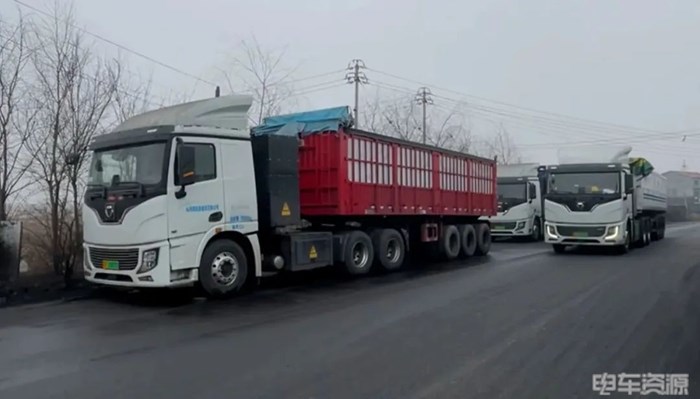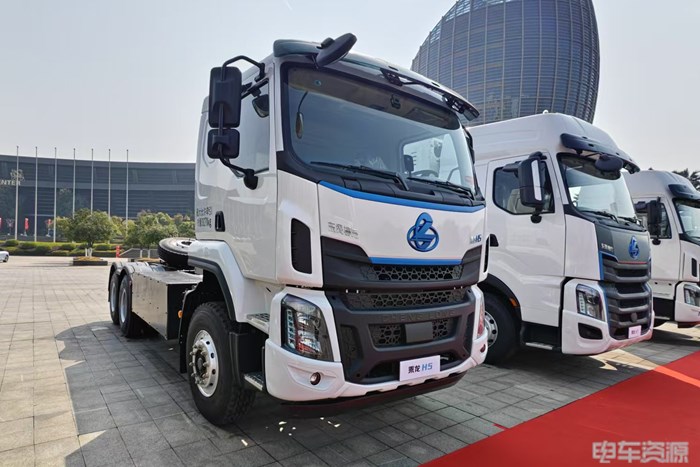Since the boom of electric heavy trucks in 2021, sales have been on the rise, with 77,971 units sold from January to June 2025, accounting for 97.82% of new energy heavy truck sales. According to research by Green Heavy Trucks, electric heavy trucks are primarily used in short-haul transport, with limited applications in medium to long-distance transport. Most electric heavy trucks running on medium to long-haul routes are still in trial operation, and large-scale logistics companies utilizing them are rare. In the heavy truck transport market, short-haul transport represents only a small share, while medium to long-distance transport dominates the market share. To increase market penetration and expand operational scenarios, electric heavy trucks must break into the medium to long-distance transport sector. On August 10, Green Heavy Trucks will host the "Green Power Southwest: Linking Mountains and Seas - 2025 Southwest China New Energy Heavy Truck Logistics Innovation Conference" in Guizhou, inviting experienced electric heavy truck operators to share their insights and experiences.
As the industry prepares for medium to long-distance operations, challenges persist due to battery technology and energy-saving technology constraints, as energy consumption levels and range of electric heavy trucks remain key concerns. After years of technological advancements, energy-saving technologies for electric heavy trucks have significantly improved, with energy consumption for fully loaded trucks dropping to below 2.0 kWh/km on flat routes, and some mature electric heavy truck models achieving energy consumption levels as low as 1.5 kWh/km. This reduction in energy consumption effectively enhances the range of electric heavy trucks. Furthermore, energy-saving technologies continue to improve, promising further reductions in energy consumption and increased range.
The price of lithium carbonate, a key material for power batteries, has reached a low level, and compared to previous years, the prices of power batteries have experienced a significant decline and have stabilized. Heavy trucks with large-capacity batteries (over 400 kWh) have become mainstream in the market, directly enhancing the range of electric heavy trucks. The construction of charging networks for electric heavy trucks is accelerating, with the rapid adoption of fast-charging technology resulting in an increasing number of fast-charging stations. Along certain trunk routes, a robust network of charging stations has been established, effectively extending the range of electric heavy trucks. The release and application of megawatt supercharging technologies this year have greatly improved the refueling efficiency of electric heavy trucks, enhancing their operational efficiency.
With reductions in vehicle energy consumption, increased battery capacities, improvements in refueling efficiency, and accelerated development of refueling networks, the electric heavy truck industry is actively advancing into the medium to long-distance transport sector, promoting electric heavy trucks for these routes. Research from Green Heavy Trucks reveals that some long-distance transport routes exceeding 500 kilometers have already begun using electric heavy trucks, employing both charging and battery-swapping refueling models. How to plan refueling routes and establish a refueling network for electric heavy trucks on trunk routes? The upcoming conference on August 10 will provide a platform for successful electric heavy truck operators and refueling service providers to exchange experiences and insights.
In terms of energy consumption, most electric heavy trucks operate on non-highway routes, primarily on national or provincial roads. Research by Green Heavy Trucks indicates that continuously falling freight rates and limited discounts on highway tolls have led many freight vehicles to choose toll-free national roads to save on transportation costs. Additionally, highways impose speed limits (generally 60-120 km/h) on vehicles. It is well-known that electric vehicles achieve the lowest energy consumption at 60 km/h, while speeds above 80 km/h cause a significant increase in energy consumption, with some vehicles consuming over 1.5 kWh/km, even reaching above 2 kWh/km. The charging prices at highway service areas generally exceed 1.5 yuan/kWh, resulting in energy consumption costs for electric heavy trucks on highways reaching 2.25 to 3 yuan/km. In contrast, traditional heavy trucks, when traveling over 80 km/h, achieve lower energy consumption as speeds increase, with fuel consumption of 30L per 100 km translating to an energy cost of 2.25 yuan/km based on diesel priced at 7.5 yuan/L. On highways, the low-cost operational advantage of electric heavy trucks diminishes, and their energy consumption costs can exceed those of traditional heavy trucks.
Despite the lack of cost advantages for electric heavy trucks on highways, they are not entirely unviable for highway travel. In terms of transportation efficiency, highways outperform national roads. By strategically planning transport routes and adopting a combined "highway + national road" transportation model, costs can be effectively reduced by avoiding charging at highway service areas. In certain regions of Southwest China, national roads feature steep slopes which increase energy consumption for electric heavy trucks, whereas highways offer smoother conditions that stabilize energy consumption, ultimately reducing transportation costs. For example, a logistics company in the Zunyi area of Guizhou has implemented a combined "highway + national road" transportation model for a 120 km short-haul route, significantly improving operational efficiency and increasing daily transport frequency, thus enhancing overall profitability when accounting for highway fees.
In conclusion, the entry of electric heavy trucks into the medium to long-distance transport sector is inevitable; however, their cost advantages on highways have yet to manifest. By employing a combined "highway + national road" transportation model in short-haul scenarios, and with proper route planning and refueling network calculations, electric heavy trucks can achieve cost reduction and efficiency improvements.
Electric Heavy Trucks Make Strides in Medium-Long Distance Transport

Images


Share this post on: